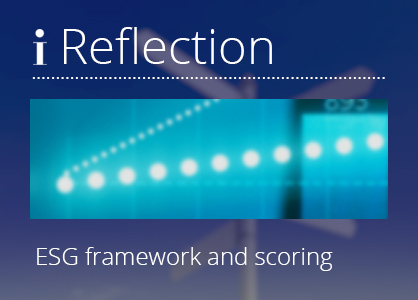
A practical approach to ESG frameworks, ratings and reporting
For many Asset Management Organizations the current situation with
- Multiple Sustainability/ESG frameworks such as Principles for Responsible Investing (PRI), CDP (Carbon Disclosure Project), SASB etc that are available to use and, in some cases, mandated by upcoming legislation, like the EU-taxonomy incl SFDR, NFRD etc,
- Additional requirements from Stock Exchanges or binding Industry Associations regulations
- Distributors and other partners varying reporting formats
- Lacking Enterprise disclosures of ESG-data (especially against the EU-taxonomy)
makes it very difficult to navigate this landscape without being overwhelmed by endless details.
It is definitely clear that all Asset Managers falling under the EU regulations (and indirectly quite a few of those under the thresholds that distribute their funds via large distributors) need to be able to document their decisions for ESG related activities and considerations in a structured/systematic manner. This is regardless if one has an active approach to ESG factors or not.
Some numbers exist and there are a number of ESG-ratings providers to choose from. But several research reports show that the providers have significantly different approaches on how to calculate the many different ESG metrics and hence come to varying results or scores for the same company or asset. In short, relying primarily on external ESG ratings is not enough (see previous reflections here) and the ratings will not adress the regulatory requirements on internal processes and policies.
On top of this there is still significant uncertainty how the whole “ESG-area” should be reported to the regulating bodies, to the market and to the End Customers, (see one example of guidance from the IA in UK).
For SFDR the finalized the “Level 2” Regulatory Technical Standards (RTS) will be published now in December and will take effect already on March 10, 2021. (Hopefully somewhat simplified compared to the draft. And there are also rumors on delays in the process).
The lack of data can be frustrating; however, it is more important to get started on the qualitative (and numerical if available) analysis on a selected number of ESG metrics on investee companies.
For Asset Managers within EU, a practical starting point could be to start tracing and logging, decisions, interactions etc. according to the organizations policies against the proposed PAI-metrics, to build internal knowledge and ability to compare and evaluate the ESG-rating data.
In short, start now with a subset of the metrics and extend the models as more information becomes available.
Inzyon Reflections is a series of brief thoughts and observations with a bearing on insights management in general and, every now and then, sustainability matters in particular. For additional Inzyon Reflections, see here.
Read about the ESG Monitor here.
